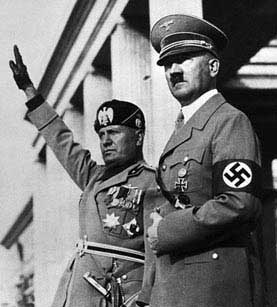
The Fascist movements which arose in Europe during the 1920's and 1930's were very different in character, and they mirrored the entirely different national backgrounds of the countries in which they developed. Some were more conservative, and others more radical in their demands and their actions. Some were violently anti-Semitic, and others were not. Some took revolutionary action and staged armed revolts against the government, while others insisted on the legal way as the only possibility of attaining power. Some acquired a strong following among the lower classes, while others remained almost entirely middle and lower middle class. With so much variety, it might be asked what hey had in common, and with what justification we can speak of Fascism in the singular. The following pages are an attempt to discuss those common traits — the factors which distinguish Fascism from other contemporary movements, whether right-wing or left-wing.
The Fascist movements, as has been emphasized by other writers, had much in common in their ideology — so much that they were able to borrow from each other.
He then goes on to enumerate several points of commonality among the various Fascist movements:
- Strongly nationalist
- Violently anti-communist / anti-Marxist
- Hatred of Liberalism, democracy, political parties
- Favored an authoritarian / corporative state
- Party élitism
- Para-military character of party
- Myth of nation / race
- Program of territorial expansion
- Glorification of nation's historical (or pseudo-historical) past
- Myth of the "Leader"
- Cult of violence and "action"
- Myth of the "devilish propensities of the Jewish race"
He then makes the following observations:

- Unlike most other parties, which are to some extent class based, Fascist parties usually appealed to all groups in society, though especially to the lower middle classes that feel most threatened by economic change.
- Fascist movements could develop in countries with a very strong left-wing movement (e.g. Italy or Spain) but equally in countries where the opposite was the case (e.g. pre-industrial Romania, or in Germany where the working class movement was suppressed).
- Fascist movements thrive during economic crisis
- Fascist movements rarely come to power unless some element of the existing power structure (the monarch, the army, the big capitalists) support the movement.




No comments:
Post a Comment